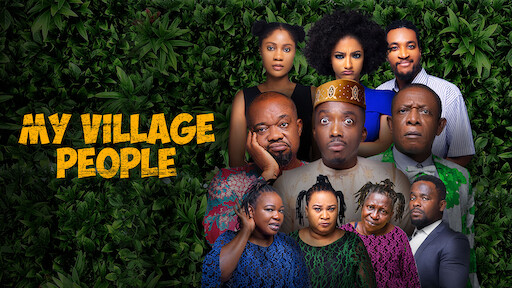
Nollywood, Witchcraft, and the Supernatural
You cannot predict Nollywood: it transforms itself like a chameleon changing color. Like the sprawling Nigeria landmass, Nollywood is increasingly becoming so vast that it is hard to keep up with the latest releases. But thanks to global capitalism that makes online streaming possible, one can always catch up with the new releases on Netflix, Amazon Prime, and YouTube. Besides encountering Nollywood films online, the global streaming platforms have also birthed new filmmaking styles. Recently, we have witnessed new filmmaking styles that blend traditional storytelling approaches with new modes of scriptwriting. Nollywood is creating its own film genres, and there are many of them. The genres reflect the Nigerian filmmakers’ creative energies, tenacity, and purpose. While the late Ousmane Sembene gave African cinema its own language, Nollywood is reshaping the African cinematic arena through the creative experimentations of its filmmakers. These innovative filmmaking efforts reimagine the social realities of Nigerians and reassemble pastiches of religious and mythological beliefs in stories that explain the connectedness of secular and sacred spaces.
That creative imagination makes it possible for a film like My Village People (2021) to underscore the spiritual connotation of sexual pleasure. Sexual pleasure, as we know it, is enjoyable. However, the film warns that it carries a heavy spiritual weight at a deep level. To demonstrate that sexual pleasure can inflict spiritual pain, Prince, the film’s main protagonist, suffers a series of nightmares after he had a one-night fling with a village belle, Haggai, in his ancestral village during the wedding ceremony of his sister, Princesses. To Prince, as a Lagos boy, money answers all prayers. So, he thinks of his sexual encounters with women as a mere transactional exchange, not an emotional matter. He is the type you call the “fine-boy demon.” Therefore, he sees his sexual affair with Haggai as a homecoming experience. But what Prince did not know is that Haggai is a witch who can teleport herself and straddle spiritual realms. Also, there are the three weird sisters, who, for a reason best known to them, have some romantic feelings for Prince. They waylaid him and made him carry their “black soap” to Lagos for sale.
Upon returning to Lagos, Prince must work overnight with a colleague in his office, Ameh, to prepare a powerful sales pitch for a new client. Ameh tried to dodge an all-nighter with Prince, but he insisted. Later, Prince is seen at a bar with Ameh praising her beauty and wanting to kiss her. At that point, the story begins to unfold as Haggai arrives in Lagos to claim Prince as her lover. Unfortunately, Prince and Ameh are fired from their positions because they gave a sloppy presentation. Prince claims Haggai spiritually attacked him, and until then, no one suspects that Ameh also possesses a marine spirit.
My Village People is not creatively spectacular in content and thematic preoccupation. However, it is a comedy-romance story that returns us to the occult film era. The film focuses on “supernatural power” and places witchcraft at the center of the cosmic disequilibrium. This time, the witches are framed differently and function more like human beings with feelings and love emotions. We now know that witches and their marine colleagues can fight over a lover.
Interestingly, the witches are also technology savvy and appear normal as other citizens. There is nothing about them that suggests that they are witches or that they possess some spiritual power. Instead, they show that they are aware of the fashion in vogue and slay, too. That is a first, in my view, that Nollywood will represent witches as beautiful, club-going women who are not Femme Fatales. Usually, elderly witches are portrayed as wrinkled and blood-sucking vampires that wreak havoc and cause pain. The clash between the tall-dark-skinned witch, Haggai, and the short-fair-skinned Marine agent, Ameh, is another exciting addition to the story. Here, we see beautiful ladies with supernatural powers fighting over one man, the Prince (Bovi), who is a Cassanova. While the film delineates the space of the witches apart from that of the marine spirits, it later collapses them in the bar scene. At the bar, spaces fused together to show that women with different supernatural powers can work together if they share a common goal. Who could have thought that witches wear wigs and slit dresses?
Ultimately, My Village People leans towards the theme of “true love” and “sacrifice,” two regular thematic preoccupations of Nollywood melodrama. Prince genuinely wanted to help Haggai so that she could regain her freedom from the coven. Ameh tried her best to woo Prince, but his love for Haggai prevailed. As later revealed, the “chosen one” is not Prince, the film’s main protagonist. His sister, Princess, is the chosen one. That plot twist is one of the film director/producer’s most significant decisions, in my judgment as a scholar of witchcraft. It is an affirmation of the cult of iyami as a feminine cult. Think of it; the chosen one can not always be a man. Women, too, could function as the chosen ones.
In conclusion, witches do not have to dress in a certain stereotypical way; they do not need to mark their bodies with white/red/black markers while hungrily gobbling human flesh in their covens. Like Princess, they can be foreign-accent-tush, designer bag-carrying and high-flying career women married to business executives and foreign expatriates. Powerful women with global connections and diasporic identities—the global amazons!
Olusegun Soetan is an Assistant Teaching Professor of African Studies , Penn State University. He is the author of Jẹ́ N Wí Tèmi (an anthology of Yoruba feminist poems). He is currently researching, Transnational Agency, Nollywood Feminist Auteurs, Patriarchy, Oṣòròmọ̀nìgà: Representations of Witchcraft in Yoruba Films.
